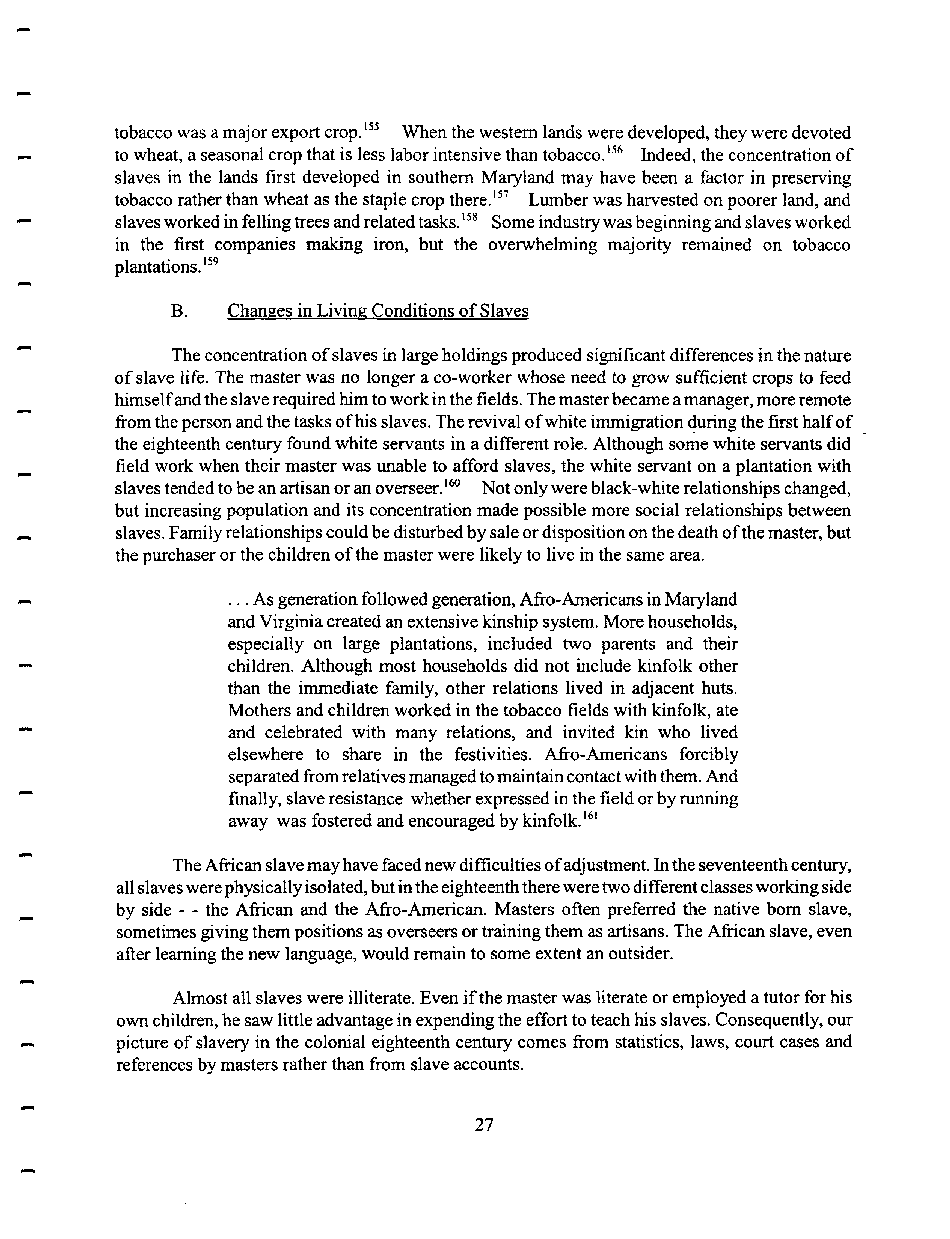|
tobacco was a major export crop.155 When the western lands were developed, they were devoted
to wheat, a seasonal crop that is less labor intensive than tobacco.156 Indeed, the concentration of
slaves in the lands first developed in southern Maryland may have been a factor in preserving
tobacco rather than wheat as the staple crop there.157 Lumber was harvested on poorer land, and
slaves worked in felling trees and related tasks.'58 Some industry was beginning and slaves worked
in the first companies making iron, but the overwhelming majority remained on tobacco
plantations.159
B. Changes in Living Conditions of Slaves
The concentration of slaves in large holdings produced significant differences in the nature
of slave life. The master was no longer a co-worker whose need to grow sufficient crops to feed
himself and the slave required him to work in the fields. The master became a manager, more remote
from the person and the tasks of his slaves. The revival of white immigration during the first half of
the eighteenth century found white servants in a different role. Although some white servants did
field work when their master was unable to afford slaves, the white servant on a plantation with
slaves tended to be an artisan or an overseer. 16° Not only were black-white relationships changed,
but increasing population and its concentration made possible more social relationships between
slaves. Family relationships could be disturbed by sale or disposition on the death of the master, but
the purchaser or the children of the master were likely to live in the same area.
... As generation followed generation, Afro-Americans in Maryland
and Virginia created an extensive kinship system. More households,
especially on large plantations, included two parents and their
children. Although most households did not include kinfolk other
than the immediate family, other relations lived in adjacent huts.
Mothers and children worked in the tobacco fields with kinfolk, ate
and celebrated with many relations, and invited kin who lived
elsewhere to share in the festivities. Afro-Americans forcibly
separated from relatives managed to maintain contact with them. And
finally, slave resistance whether expressed in the field or by running
away was fostered and encouraged by kinfolk.161
The African slave may have faced new difficulties of adjustment. In the seventeenth century,
all slaves were physically isolated, but in the eighteenth there were two different classes working side
by side - - the African and the Afro-American. Masters often preferred the native born slave,
sometimes giving them positions as overseers or training them as artisans. The African slave, even
after learning the new language, would remain to some extent an outsider.
Almost all slaves were illiterate. Even if the master was literate or employed a tutor for his
own children, he saw little advantage in expending the effort to teach his slaves. Consequently, our
picture of slavery in the colonial eighteenth century comes from statistics, laws, court cases and
references by masters rather than from slave accounts.
27
�
|

